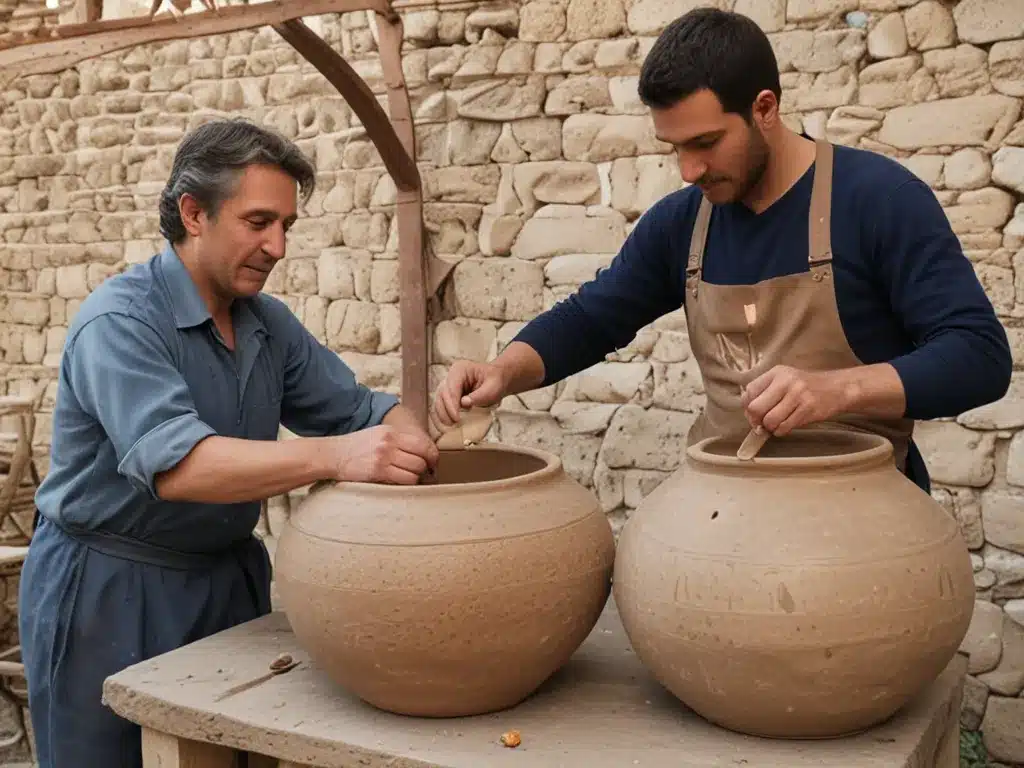
Introduction
I am excited to share the story of the ancient Georgian clay vessels called kvevris and the revival of this ancient winemaking tradition. As a wine lover and cultural enthusiast, learning about kvevri winemaking has been a fascinating journey.
What are Kvevris?
Kvevris are large earthenware vessels used for fermenting, ageing, and storing wine in Georgia, the country located at the intersection of Western Asia and Eastern Europe.
- These egg-shaped clay pots typically hold 500-3000 liters of wine and are buried underground up to their necks.
- Kvevris have been used in Georgia for winemaking since ancient times, with archaeological evidence dating back over 8000 years.
- Their design takes advantage of the stable temperatures underground to control fermentation and ageing. The wax coating on the interior also provides a seal.
I find it amazing that this centuries-old vessel design persists as an incredibly effective winemaking technique. The kvevri tradition reflects Georgia’s proud history of winemaking, considered to be among the oldest in the world.
Traditional Kvevri Winemaking Process
The kvevri winemaking process differs from modern methods and leverages the properties of the clay to enhance the wine. Here are the main steps:
- Grapes are harvested and destemmed before being placed into the kvevri along with skins, seeds, and stems.
- Yeasts on the grapeskins trigger natural fermentation within the kvevri. Temperatures underground stay stable.
- After primary fermentation, the wine remains in contact with the grape solids for an extended maceration period of several months up to a year. This extends the extraction.
- The wine is then racked into a clean kvevri for ageing, remaining underground for many years.
- Finally, the mature wine is racked again into a storage kvevri or bottled. Nothing is typically added to stabilize or alter the wine.
This hands-off, minimal intervention approach allows the grapes and kvevris to work together to produce a unique, full-bodied wine. I find it remarkable that the porous clay and wine interact, with the kvevri imparting subtle oxidizing characteristics.
Revival of Kvevri Winemaking
The use of kvevris dwindled during Soviet rule in Georgia, when winemaking shifted toward mechanization and technical efficiency. However, since the 1990s, there has been a concerted effort to revive this traditional technique.
- Pheasant’s Tears winery led efforts to reintroduce kvevri wines starting in 2007. Wines like their Rkatsiteli have brought international acclaim.
- Other pioneering natural winemakers include Okro’s Wine, Iago’s Wine, and the Shavi Lorenzo cooperative.
- Younger generations are returning to family roots and embracing kvevri winemaking, with over 60 wineries now using the vessels.
- The revival has been bolstered by a UNESCO Intangible Cultural Heritage designation awarded in 2013 recognizing the ancient kvevri tradition.
As a result, the future is bright for the rebirth of Georgian kvevri winemaking. These wines represent a cultural legacy, a winemaking heritage, and a profound connection to history. I am thrilled to see this unique Georgian tradition undergo renewal.
My Tasting Experience
I recently had the chance to taste some traditional Georgian kvevri wines and was thoroughly impressed by their complexity and unique flavors.
- The amber color was unlike any other wine, with a range from deep gold to copper-orange hues. This is from extended skin contact.
- On the nose, they showed earthy and herbal aromas – forest floor, tea leaves, herbs, a hint of funkiness. Quite different from fruity New World wines.
- The first sip revealed a rich, grippy texture and almost tannic dryness. Their acidity leaves the mouth watering.
- Flavors of cooked stone fruits, spices, and botanicals lingered on the palate long after swallowing. Each sip told a story.
This was an eye-opening experience that gave me profound respect for the kvevri winemaking process. I’m now keen to try more of these living pieces of history.
The Significance of Kvevris
Looking at the big picture, the significance of the kvevri revival is multifaceted:
- It keeps alive a historic tradition deeply intertwined with Georgian cultural identity. Kvevris are a Georgian icon.
- The wines reflect a sustainable, environmentally friendly approach minimally shaped by man.
- Kvevris enable the creation of a wine style you truly cannot replicate anywhere else. This concept of terroir is elevated.
- There is renewed pride in traditional Georgian winemaking, attracting new generations.
- Globally, it provides diversity and an alternative to modern commercial winemaking. Kvevris offer something different and new for wine enthusiasts like myself.
This elemental vessel can transport us through time to taste a winemaking style from centuries past. Each clay pot tells a compelling story through the wine within. I am fascinated and inspired by the kvevri revival taking hold in Georgia. It demonstrates the timeless joy of wine in its purest form.



















